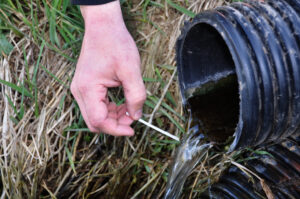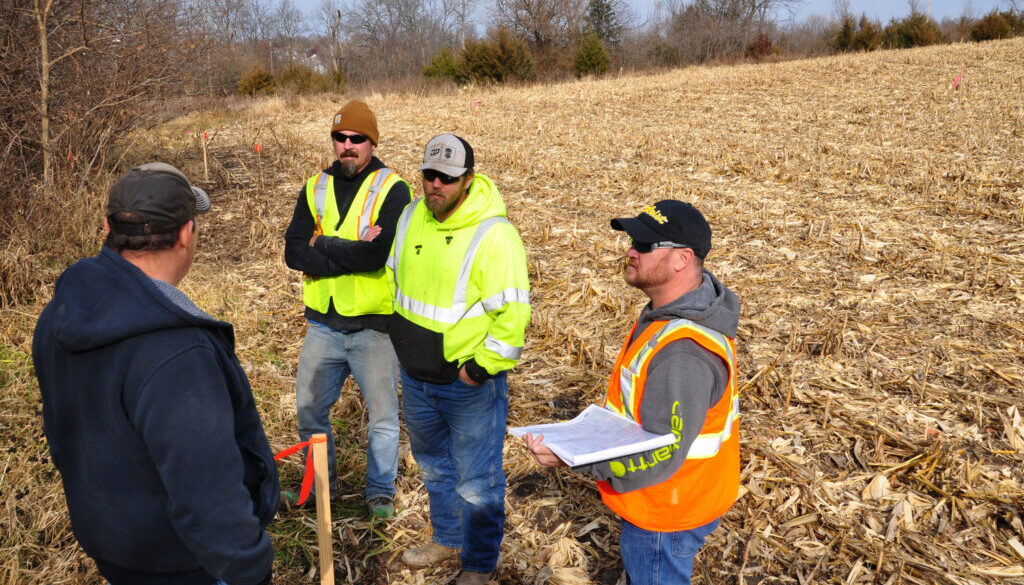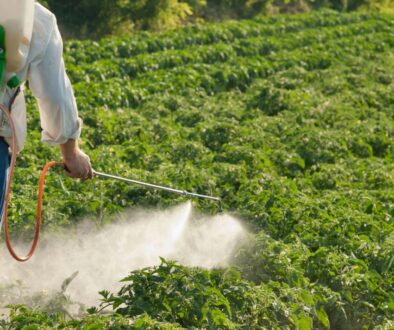Environmental groups urge Iowa to strengthen water standards amid rising cancer rates
Listen to the audio version of this article (generated by AI).
Environmental groups are pressing Iowa regulators for stricter water protections by getting up-to-date with federal recommendations and lowering nitrate limits, alleging that current safeguards are outdated, weak and leave Iowans exposed to toxics tied to rising cancer rates.
Nine groups — including the Iowa Environmental Council (IEC), the Environmental Law & Policy Center (ELPC), the Environmental Working Group (EWG) and Food & Water Watch — submitted comments to the Iowa Department of Natural Resources (IDNR) last week regarding the state’s review of water quality standards, which happens every three years. The groups point out the state’s ongoing issues with pollution in its waterways and the mounting evidence that pesticides, fertilizers, manure and other contaminants from Iowa farms are likely contributing to rising cancer rates that are impacting families across the state.
“IDNR needs to ensure that our water quality criteria protect against water pollution that may be contributing to Iowa’s high cancer rates, ranging from pesticides to industrial chemicals to PFAS to nitrate,” the letter states. “As a state, we should not sacrifice Iowans’ health for the benefit of industrial polluters.”
The public comments come as Iowa’s water quality remains under the microscope. A July report released by Polk County, Iowa, officials found that the state’s agricultural operations are a leading cause of water pollution problems and pose dire human health and environmental risks. In June, researchers from The Harkin Institute at Drake University and the Iowa Environmental Council launched an initiative to study the “relationship between environmental risk factors and cancer rates.” Iowa has the second-highest rate of cancer in the nation, and is only one of two US states where cancer is increasing. Leukemia, as well as cancers of the pancreas, breast, stomach, kidney, thyroid and uterus, are among the different cancer types on the rise across the state, according to the National Cancer Institute.
An event held in August at Drake University to examine water quality problems linked to the state’s agricultural industry drew hundreds of Iowans.
“There is so much public engagement and it’s very clear that the public is passionate about this and people are very concerned,” said Michael Schmidt, general counsel for IEC. “People want action on this, so I’m hopeful that will translate into action by the IDNR.”
Nitrate pollution
The purpose of the state’s review of water quality standards is, in part, to ensure it’s complying with the federal Clean Water Act enforced by the US Environmental Protection Agency (EPA). The groups point out the EPA has put forth human health recommendations for 125 contaminants in water — Iowa’s listing for water quality criteria protecting human health contains fewer than half of these. The discrepancy results from “IDNR not updating the state’s human health criteria since the 2002 update to EPA’s recommended human health criteria,” the letter states.
“The EPA has not updated those in 10 years, so it’s not that the IDNR hasn’t had an opportunity to update them,” Schmidt said.
With roughly 87,000 farms, Iowa’s economy is driven by agriculture. However, there is increasing evidence that the fertilizers, pesticides and livestock manure are polluting the state’s waterways. One of the most frequent contaminants is nitrate, a form of nitrogen used as a fertilizer. About 80% of the nitrogen and phosphorus — another nutrient used on crops that runs off into waterways — in central Iowa rivers and lakes comes from agricultural sources. Nitrate levels spiked so high in Iowa rivers this past summer that public health officials banned about 600,000 businesses and homeowners from watering lawns because filtering the nitrates was so taxing for water utilities. Nitrate is linked to birth defects, cancers and thyroid disease.
“There is so much public engagement and it’s very clear that the public is passionate about this and people are very concerned.” – Michael Schmidt, IEC

The letter sent by environmental groups points out that Iowa’s current safety threshold for nitrates is 10 milligrams per liter — the same as the EPA’s — but that new evidence suggests exposure is dangerous for babies at even lower levels. The groups are encouraging the IDNR to label waterways that have short-term spikes in nitrate levels as impaired, since, as of now, the state only looks at chronic exposure.
“Nitrates are dangerous chemicals — they don’t belong in our water. No one should have to wonder whether the water they drink will give them cancer or whether their day at the lake is going to make them sick,” Food & Water Watch staff attorney Dani Replogle said in a statement.
The EPA recently rescinded its previous 2024 decision that Iowa needed to update its impaired waters list because it didn’t fully capture the extent of nitrate pollution in the state’s water. IEC sent a letter to the EPA this month saying the agency’s reversal was “inconsistent with the applicable law.”
Microcystin and PFAS standards
The groups are also pushing the state to include water quality standards for microcystin in drinking and recreational water. Microcystins are toxins released by algal blooms, which are largely driven by excessive fertilizer and livestock manure in Iowa waters. The toxins cause rashes, skin blisters, stomach problems and allergic reactions, and high exposures can lead to liver damage.
“Nitrates are dangerous chemicals — they don’t belong in our water.” – Dani Replogle, Food & Water Watch
The state monitors microcystin at some lakes but only issues advisories and does not have enforceable standards for recreational waters or for drinking water. The groups point out Iowa’s consistent issues with microcystin in lakes and rivers — including some that are used for drinking water. Out of 16 lakes and reservoirs the state monitors for microcystin, 13 have had a microcystin health advisory at least once over the past 20 years.
The groups also said the IDNR should adopt the EPA’s standards for per- and polyfluoroalkyl substances, or PFAS, released last year and regulate waters beyond those used for drinking water. Exposures to some types of PFAS have been linked to certain cancers, thyroid disease, liver damage and immune system problems, among other health problems.
“EPA developed these recommended criteria to apply in waters beyond those used directly for drinking water sources,” they wrote.
State officials and the Iowa Farm Bureau did not return requests for comment. When pressed on the state’s nitrate and other agricultural chemical runoff in the past, Iowa Secretary of Agriculture Mike Naig has pointed to wetlands and buffers as key to stopping the flow of nutrients into rivers.
In announcing a conservation project in July aimed at stopping the flow of nitrates in central Iowa, Naig said “Iowans expect progress when it comes to water quality, and that’s exactly what this project helps to deliver, by partnering with local farmers and landowners and by investing in proven conservation practices like bioreactors, saturated buffers, oxbows, and cover crops, we’re improving water quality in these communities.”
Featured image: Installation crew for the city of Des Moines, Iowa, reviews plans to install bioreactors on a Polk County farm to reduce nutrient runoff. (Credit: Conservation Media Library/flickr)



